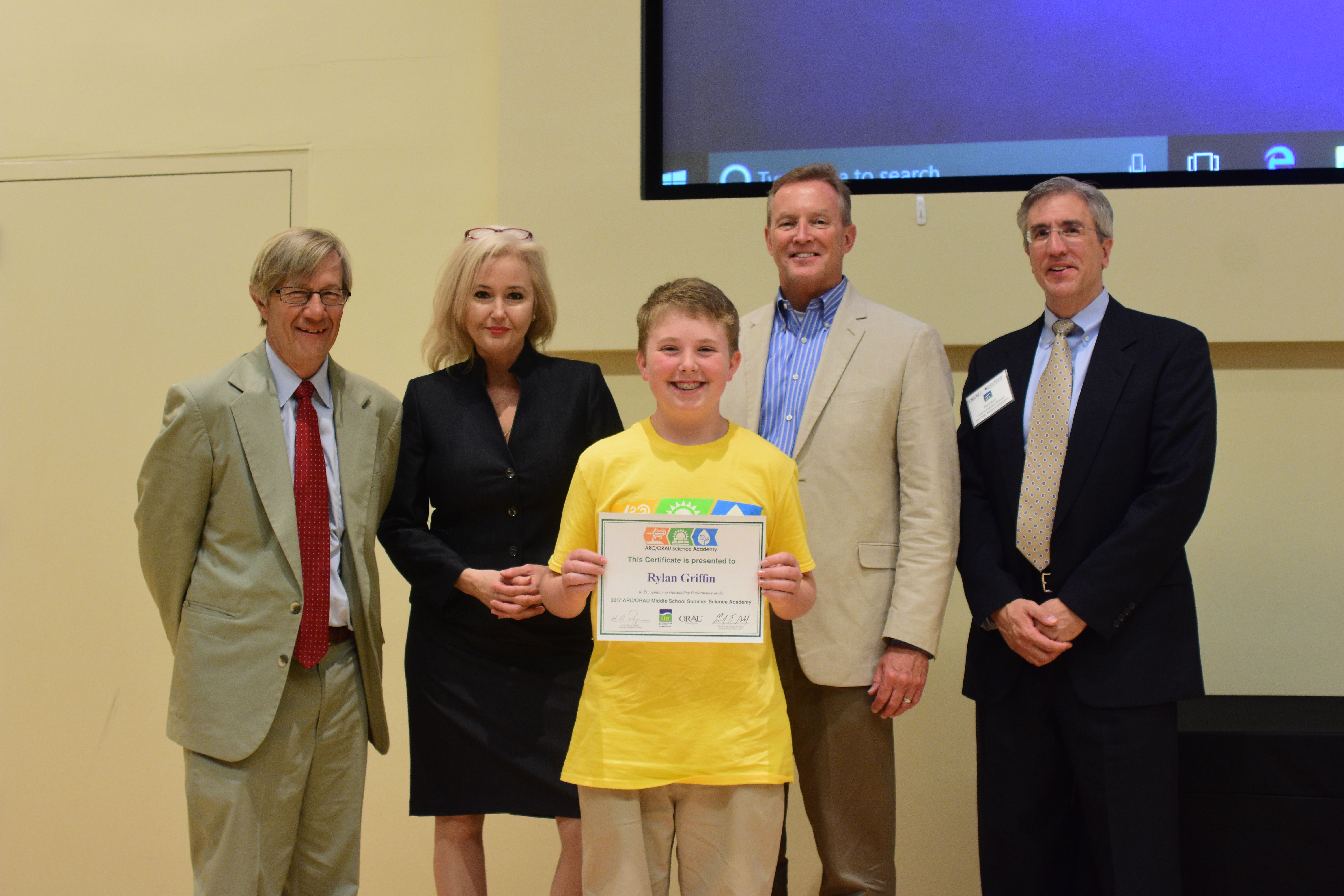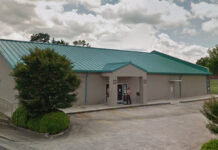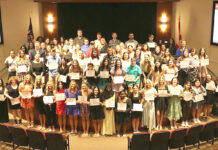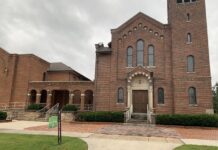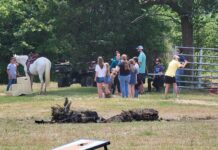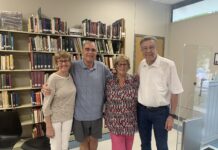Earl F. Gohl, federal co-chair, Appalachian Regional Commission; Kelly Chasteen, ARC program manager for Alabama; Rylan Griffin; Dr. William J. (Jim) Vosburg, director, Oak Ridge Institute for Science and Education; David Keim, communications director, Oak Ridge National Laboratory
OAK RIDGE, Tenn. – High school students, middle school students and teachers soaked in math, science and technology for two weeks this summer at a special hands-on institute in east Tennessee.
Rylan Griffin, son of Kalina Black and Scott Griffin of Holly Pond, was one of 26 exceptional middle school students attending the 28th annual Middle School Summer and Math-Science-Technology Institute in Oak Ridge. Gov. Kay Ivey nominated Griffin, a student at Holly Pond Middle School, to attend this accelerated learning program. He was selected based on his potential to excel in math and science and to continue in higher learning.
For 32 exceptional high school students and 26 middle school students, summer vacation energizes their learning. The students joined 16 teachers from across 10 Appalachian states to spend two weeks of their July summer break in high gear at a hands-on institute focused on math, science and technology.
The Appalachian Regional Commission (ARC), Oak Ridge National Laboratory (ORNL) and ORAU hosted the 28th annual High School and Middle School Summer Math-Science-Technology Institutes, during which the students and teachers worked on cutting-edge science projects with mentors at ORNL.
ARC worked with the governors of those states within the Appalachian Region to select students to participate in the program. Preference was given to students with limited access to STEM education and resources; students from an ARC designated distressed county; and/or students with the potential to be the first in their families to attend college.
Since 2000, the program has provided a total of 626 students and 267 teachers with in-lab learning experiences at one of the nation’s premier national laboratories.
“Our goal is that students will return to their communities from the summer Institute with real-world experiences in STEM research, will be better prepared to pursue a STEM career in the future, and will share their experiences to encourage other students to pursue STEM,” said Marie Westfall, who manages the program for ORAU.
While at the summer institute, students and teachers participated in research projects led by mentors and scientists. The teachers’ research teams focused on chemical sciences, neutron sciences, molecular biophysics and cytogenetic biodosimetry. The students’ projects dealt with supercomputers, thermochromic windows, biochemical pathways, robotics systems and engineering development and high-altitude ballooning. Students and teachers had ample time to ask questions during discovery sessions at the national laboratory, and they benefitted from the camaraderie and networking with scientists and mentors.
During this year’s institute, participants toured the historic Graphite Reactor, the supercomputing facilities, the High Flux Isotope Reactor, the EVEREST laboratory, the American Museum of Science and Energy and ORNL. By visiting East Tennessee’s iconic science and research facilities, students were introduced to the broad realm of career possibilities in STEM fields.
Bridget Kennedy, a STEM teacher at Rocky Grove High School in Franklin, Pennsylvania, participated in the Summer Institute and said she’s excited for what students at the Institute are learning and what she will be able to bring back to her classroom.
“I think a lot of the students do not realize what STEM jobs are available to them,” Kennedy said.
The summer institute concluded with a ceremony attended by ARC Federal Co-Chair Earl F. Gohl. “Every summer, the ARC/ORNL Summer Institute helps Appalachia’s students and teachers find their passion for science and technology,” Gohl said. “This knowledge puts these students and teachers on a path to success for themselves and for the region.”

